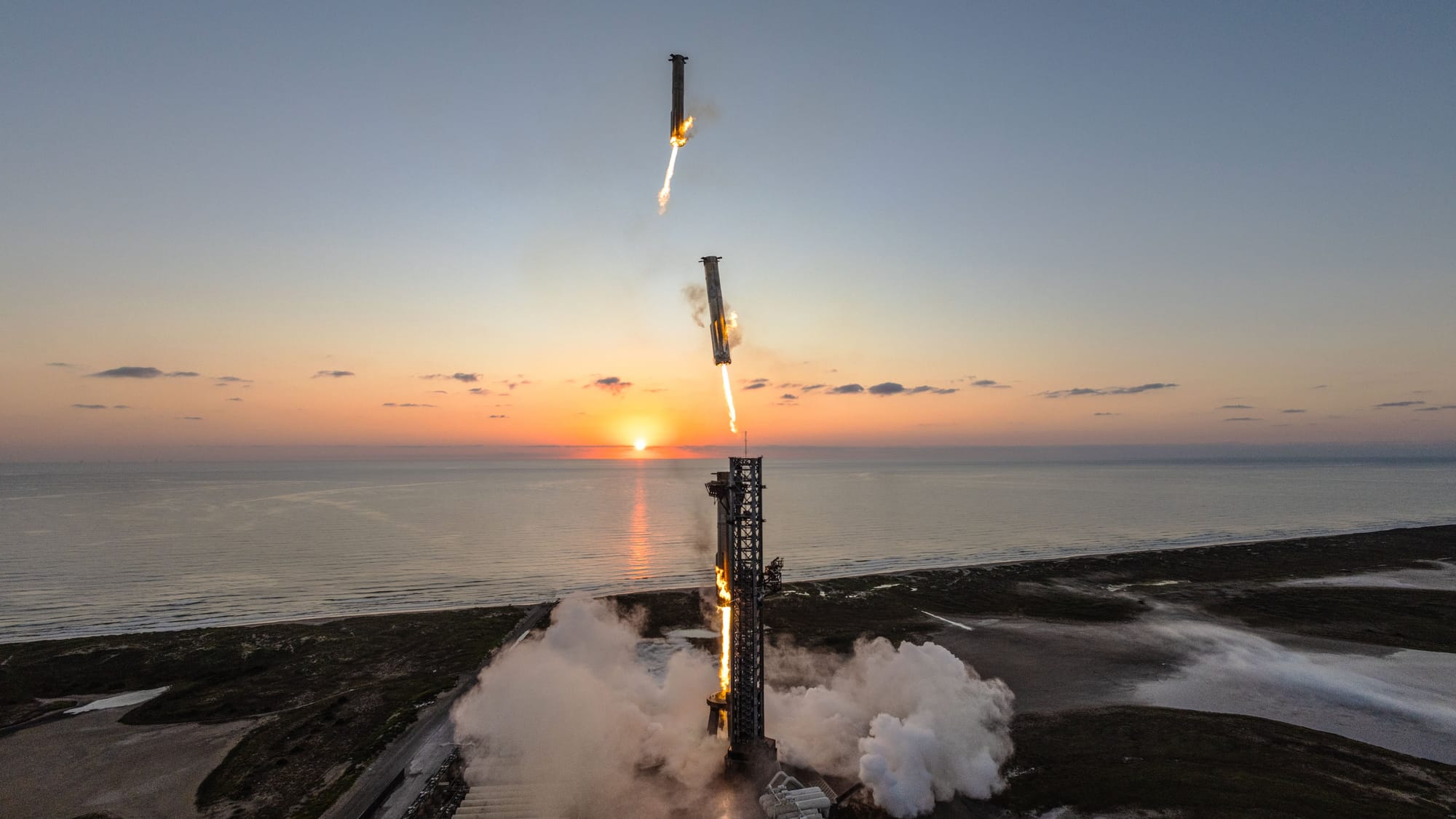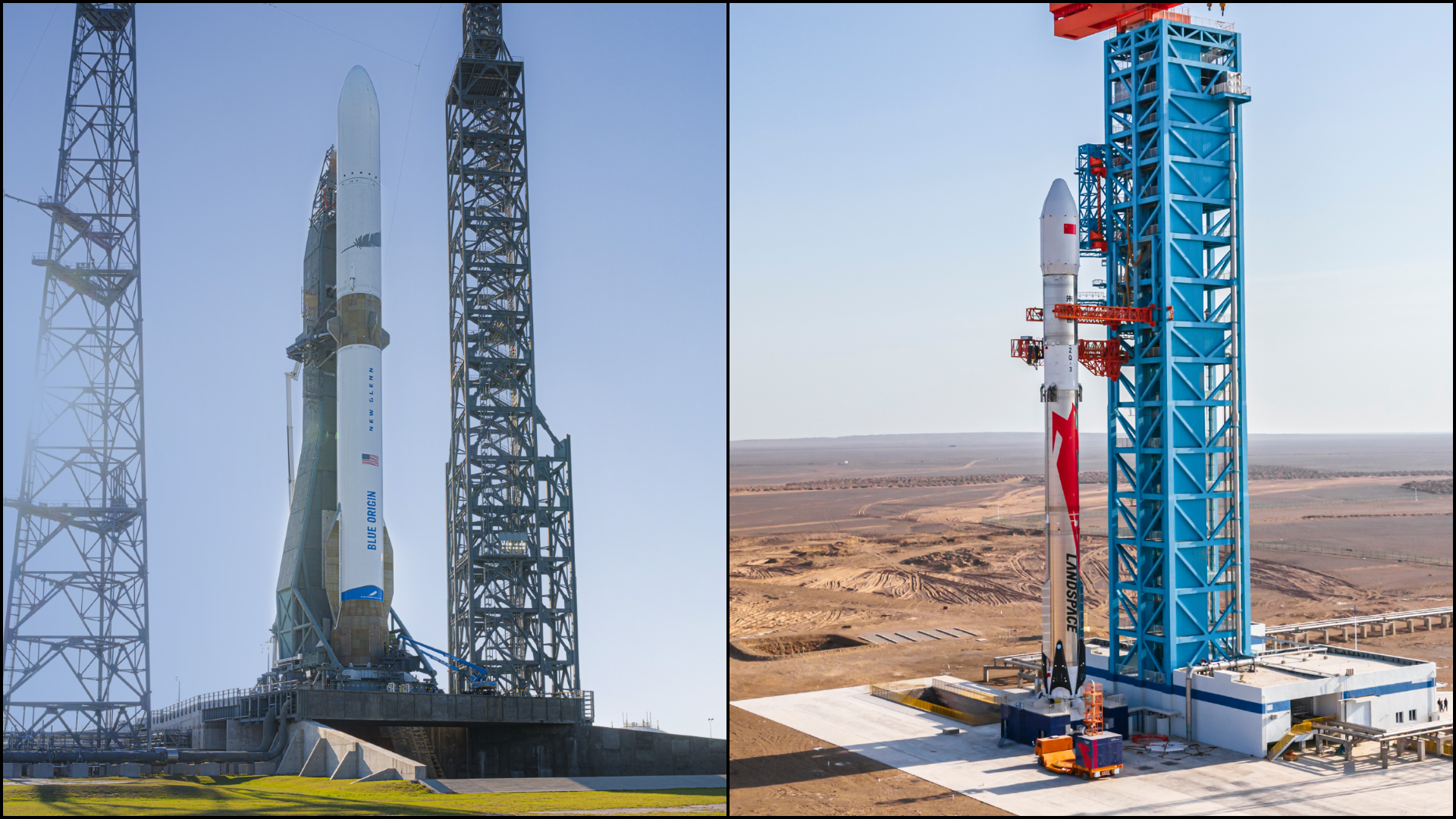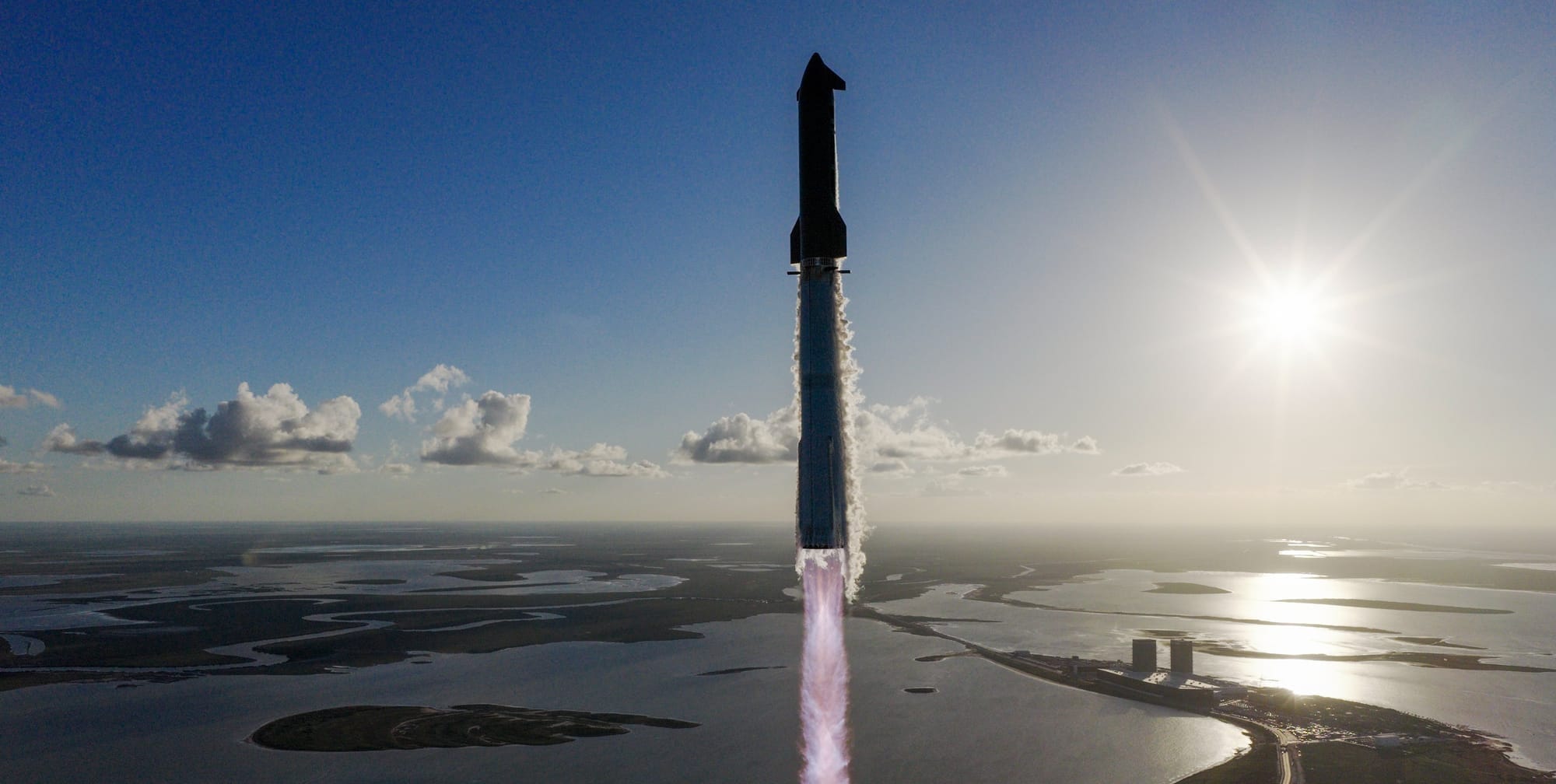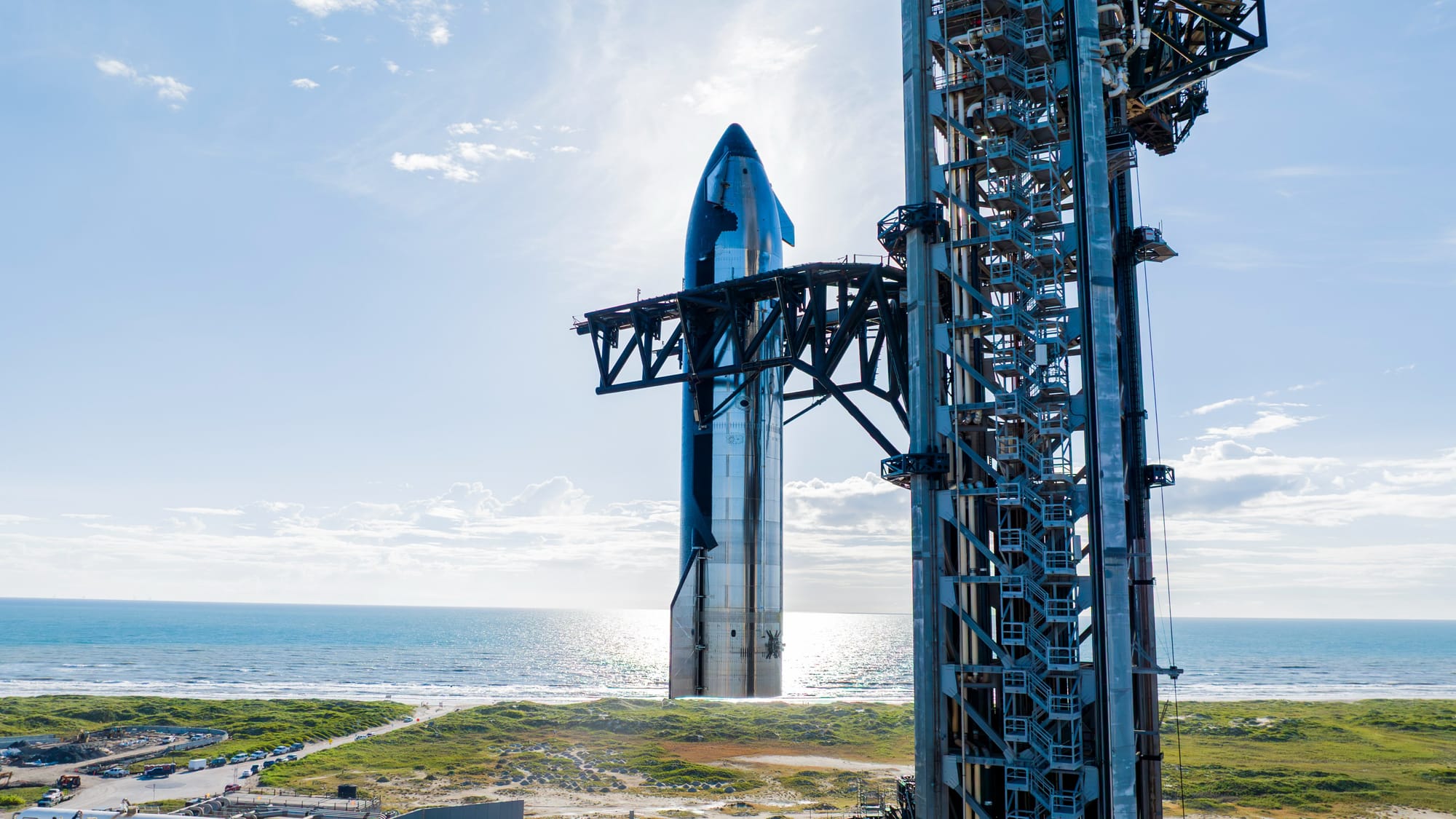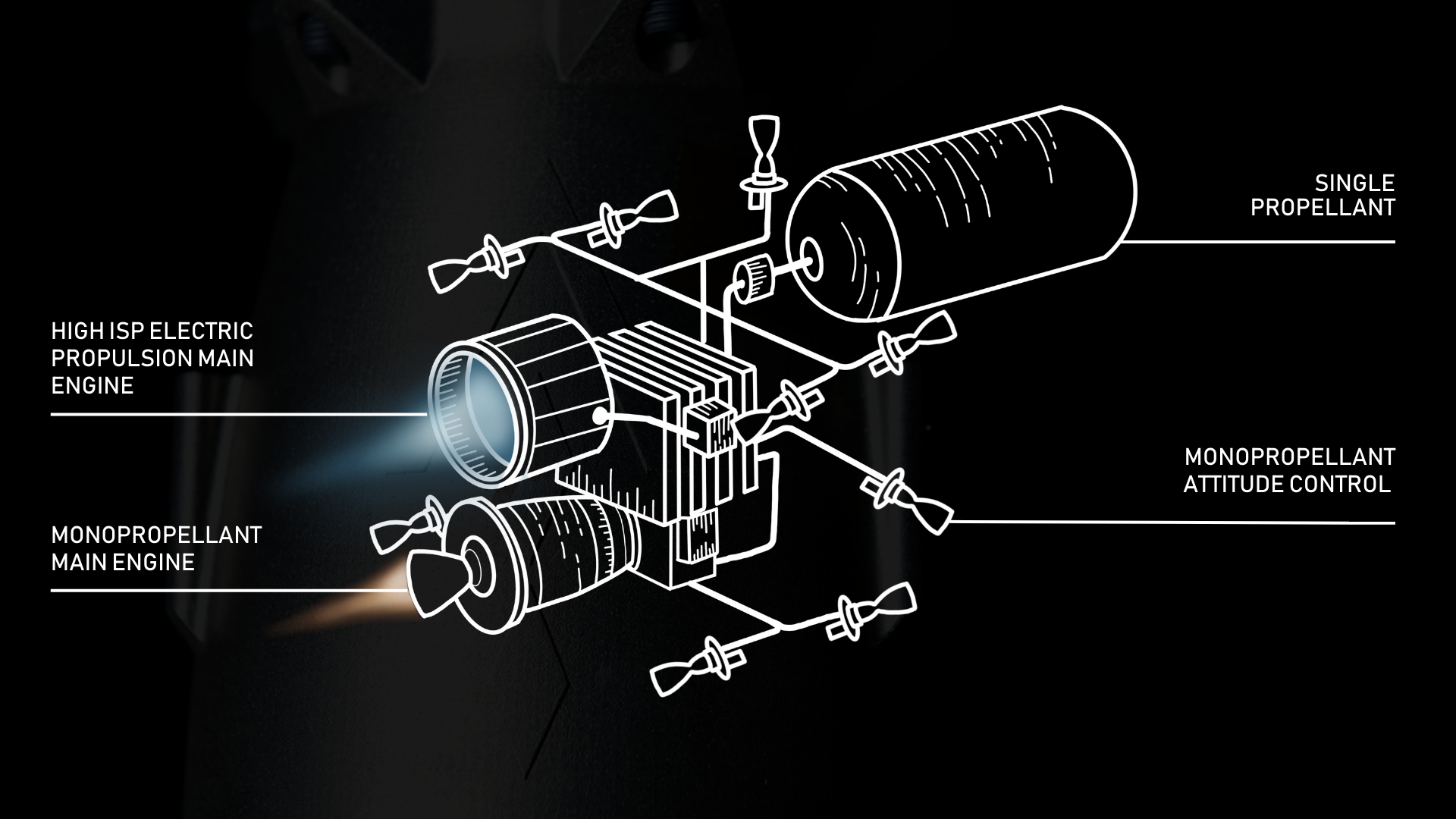Table of Contents
2024 has been another amazing year for the global space industry, so let's go over the highlights of this year!
Starship cadence doubles
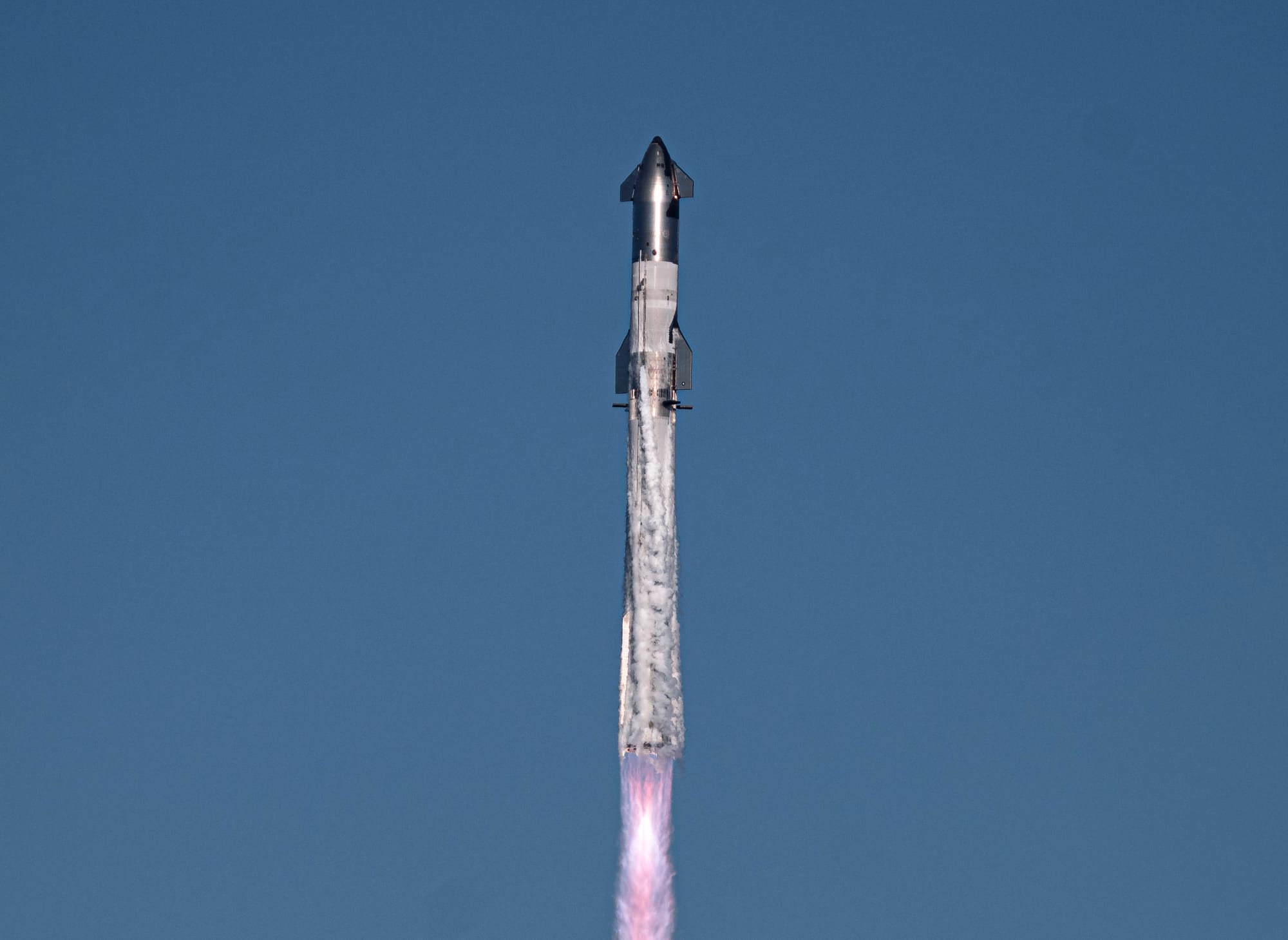
This year saw SpaceX fly its Starship-Super Heavy launch vehicle in March, June, October, and November for four test flights, doubling last year's cadence for the rocket.
March's flight test had liftoff occur with all 33 Raptor engines firing, and Ship 28 successfully hot-staging from Booster 10, marking SpaceX’s second use of this technique. Booster 10 became the first Super Heavy to relight 10 engines for a full boost-back burn and survived descent without re-entry relighting but spun out before the landing burn, igniting only three engines before crashing into the ocean. Meanwhile, Ship 28 reached second-stage engine cutoff, tested its payload bay door opening, and attempted in-space fuel transfer, but its planned Raptor engine restart did not occur. To end March's flight, Ship 28 tumbled from engine cutoff onward and was lost during re-entry over the Indian Ocean.
June's flight test began with Booster 11 lifting off with 32 of 33 engines firing and performing a boost-back burn. Ship 29 hot-staged off Booster 11, which jettisoned its hot-staging ring and splashed down in the Gulf of Mexico despite one engine failing during its landing burn. Ship 29 continued into space, shutting down its Raptor engines as planned, regaining control after minor rolls, and successfully managing atmospheric entry with its flaps and heat shield. Despite burn-through damage to its forward flaps during re-entry, Ship 29 endured peak heating and maximum dynamic pressure, completing a controlled descent and flipping for a successful splashdown in the Indian Ocean to end June's flight test.
October's monumental flight test started with Booster 12 lifting off on all 33 engines and Ship 30 hot-staging off the booster after "most engines cut-off." Booster 12 performed a successful boost-back burn and became the first Super Heavy booster to be caught by the launch tower's 'chopsticks'. Meanwhile, Ship 30 entered a suborbital trajectory toward a targeted reentry site over the Indian Ocean. Despite some debris shedding and burn-through on its flaps during reentry, Ship 30 passed through atmospheric entry without major structural failure, completing a controlled descent and executing a flip-and-burn maneuver for a soft splashdown in the Indian Ocean. This flight test proved the 'chopstick' tower recovery for the first time along with an accurate reentry of the Starship upper-stage.
With a small step forward for the Starship program, November's flight test carried the first payload, a banana, onboard to perform a real but trial process of having Starship-Super Heavy approved regulatorily to fly payloads. For the flight test itself, Booster 13 lifted off with all 33 Raptor engines firing, and after "most engines cut-off," Ship 31 hot-staged using its six Raptor engines. Although Booster 13 completed a boost-back burn, safety criteria prevented a return to the launch site, leading to a successful splashdown in the Gulf of Mexico. Ship 31 continued into a suborbital trajectory, achieving SpaceX's first in-space Raptor engine relight, a critical milestone for orbital flight. During reentry, minor steel deformations and debris shedding occurred due to missing heat shield tiles, but no structural failures were reported. After atmospheric reentry, Ship 31 descended nose-down to test stress limits, successfully performing a flip-and-burn maneuver with three Raptor engines before softly splashing down in the Indian Ocean, completing the test.
2025 is looking to be an even more impressive year for Starship with the 'Block 2' upper-stage set to fly in the first few weeks of the year. SpaceX is also hoping to prove the Ship-to-Ship propellant transfer demonstration this year.
China returns first lunar far-side samples
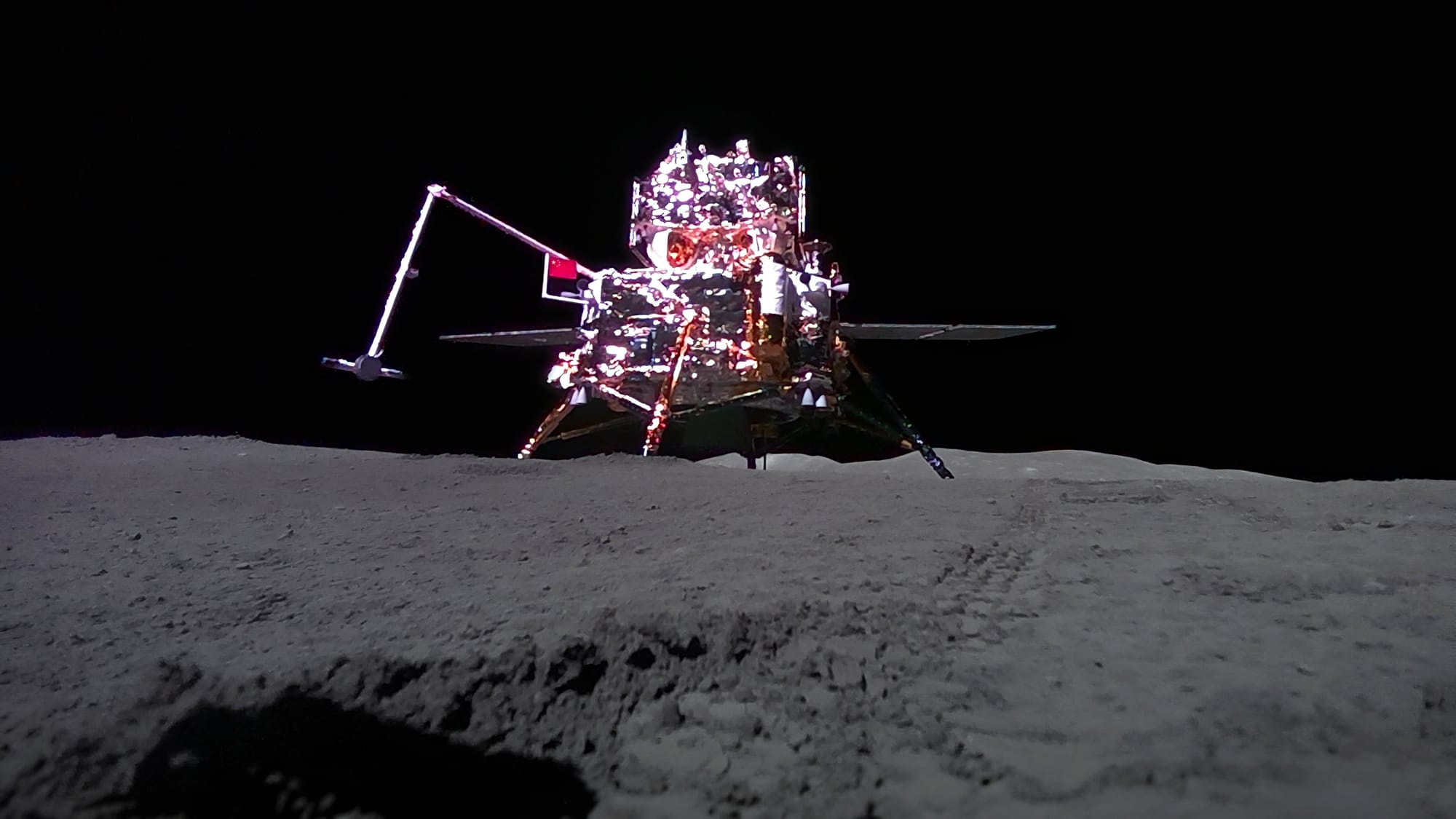
China successfully began its Chang’e 6 lunar far-side sample return mission on May 3rd from LC-101 at the Wenchang Space Launch Site. Despite rainy conditions, the Long March 5 rocket performed flawlessly, sending the spacecraft into a trans-lunar trajectory. This mission, part of China’s fourth lunar exploration phase, marked the first time humanity retrieved surface samples from the Moon’s far side.
After entering lunar orbit on May 8th, the Chang’e 6 lander separated from the orbiter and landed in the South Pole–Aitken Basin at 41°38′18.6″S, 153°59′6.72″W. Using a robotic scoop and drill, it collected 1935.3 grams of samples, which were secured in a vacuum-sealed canister. The ascent module then returned the samples to the orbiter for the journey back to Earth.
On June 25th, after a 53-day mission, the re-entry capsule landed in China’s Inner Mongolia Autonomous Region. Recovery teams quickly secured the capsule and its contents, ensuring the samples were preserved for transport to the Chinese Academy of Sciences.
The samples, retrieved from the Moon, are expected to provide valuable data on the differences between the near and far sides of the Moon, including insights into impact history and lunar crust composition. Scientists believe the findings could answer fundamental questions about the Moon’s evolution and early solar system history. Some samples from the mission have already been shared with research institutions.
America returns to the Moon's surface

On February 15th a Falcon 9 launched from Cape Canaveral, carrying Intuitive Machines’ Nova-C lander on the IM-1 mission to the Moon. This mission was significant as it was the first U.S. mission to the Moon since Apollo 17 but, it was also part of NASA’s Commercial Lunar Payload Services (CLPS) program. The Nova-C lander, also named "Odysseus," aimed to land near the lunar South Pole, an area of great interest for future exploration and potential resource utilization. Despite facing a rough landing and falling on its side after touchdown, the mission was been deemed a success, with the lander continuing to operate as planned for a few days.
Nova-C's successful landing took place on February 22nd and marked the first time a U.S. commercial company landed on the Moon. The mission carried a variety of scientific experiments and technological demonstrations designed to enhance our understanding of the Moon and advance capabilities for future sustainable exploration. These experiments include instruments to study the lunar surface environment, such as measuring plasma and dust, as well as advanced technologies for precise landing and navigation.
Lunar spacesuits revealed
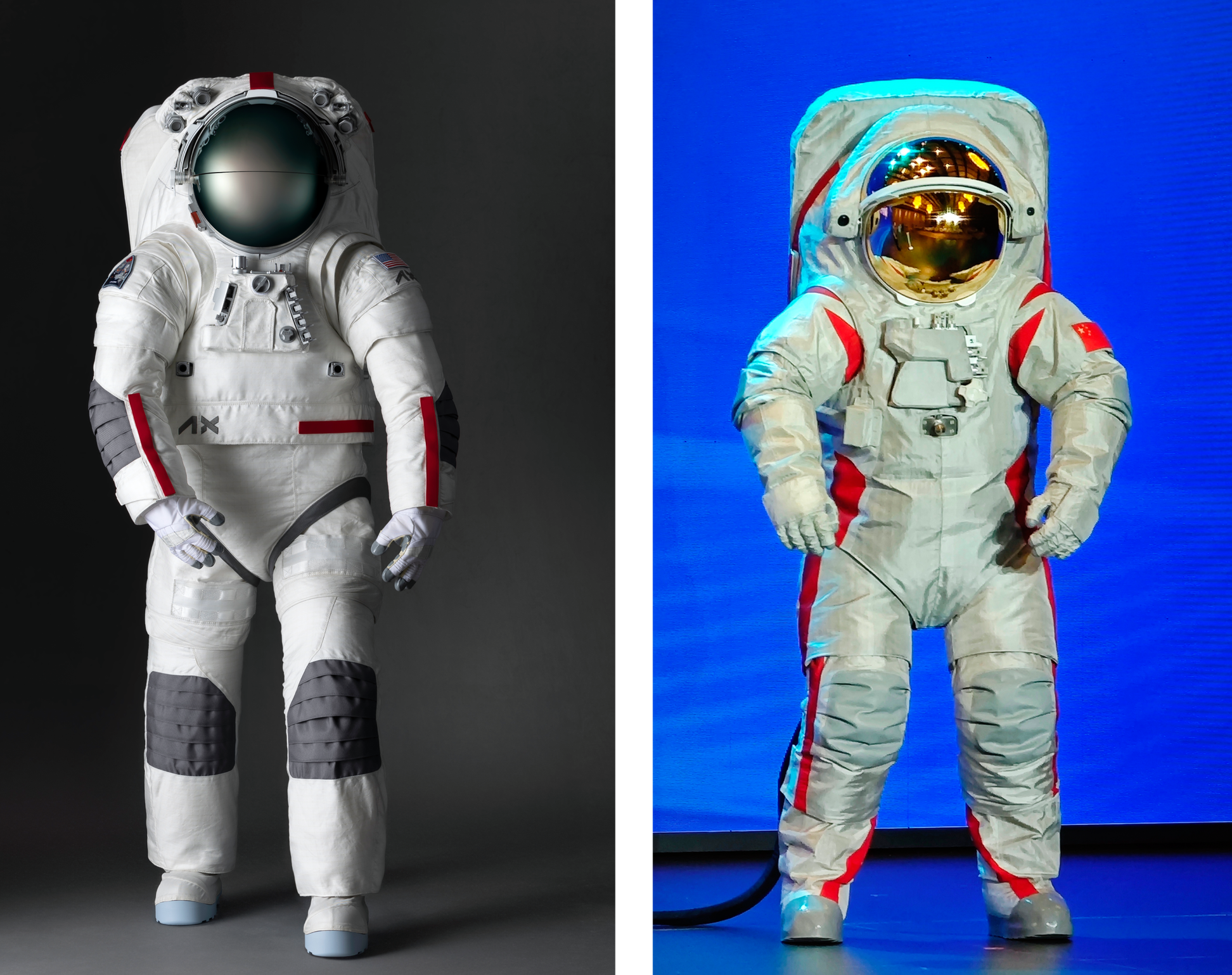
Axiom Space and the China Manned Space Agency revealed their spacesuit designs for lunar exploration in 2024.
Axiom Space, in partnership with Prada, unveiled the Axiom Extravehicular Mobility Unit (AxEMU) at the International Astronautical Congress in Milan. Designed for NASA’s Artemis III mission, now set for 2027, the AxEMU focuses on flexibility, safety, and specialized tools for exploring the Moon’s south pole. Prada contributed innovative materials and production techniques. Axiom is planning for a critical design review of the suit in 2025.
China revealed its unnamed lunar spacesuit at the Spacesuit Technology Forum in Chongqing. Development of the suit began in 2020, resulting in a lightweight, flexible suit with features such as glare-proof helmet visors, dual cameras for mission support, and improved mobility for walking, crouching, sample retrieval, and experiment deployment.
Both suits are designed to withstand the Moon’s harsh conditions and may see testing in low Earth orbit ahead of use on the lunar surface. Axiom's suit will likely see use on the lunar surface first as China plans to utilize its spacesuit on the Moon before 2030.
2024's new rockets
United Launch Alliance's Vulcan rocket was 2024's first debut and flew from Space Launch Complex 41 in Cape Canaveral, Florida. This first mission delivered Astrobotic's Peregrine lunar lander toward the Moon. Vulcan would also fly a second mission in October.
China’s first rocket to debut this year was OrienSpace’s Gravity-1, flying from a sea-launch platform in January. The all-solid fuelled 405,000-kilogram rocket carried three weather satellites into orbit for its first mission.
Space One debuted its KAIROS, or Kii-based Advanced & Instant ROcket System, four-stage solid fuelled launch vehicle in early March from Spaceport Kii for five seconds during its first flight. In December KAIROS flew again making it three minutes into flight.
Later in the year in May, the Shanghai Academy of Spaceflight Technology debuted the Long March 6C launch vehicle from the Taiyuan Satellite Launch Center carrying four satellites. The Long March 6C is based on the Long March 6A but has a smaller second-stage and no solid rocket boosters, two YF-100 engines and one YF-115 power the rocket.
Ariane 6 finally flew this year with a debut in July from Ensemble de Lancement Ariane 4 (Ariane Launch Complex 4) at the Guiana Space Centre, in French Guiana. Despite heading into orbit as planned, the rocket's second-stage suffered from an anomaly with one of its auxiliary propulsion units, stranding the stage in orbit along with a few experimental reentry capsules.
LandSpace debuted the improved Zhuque-2E rocket in late November while carrying two satellites into orbit from the Jiuquan Satellite Launch Center. Zhuque-2E is largely based off the existing Zhuque-2 vehicle but features a restartable TQ-15A engine, all engines powering the rocket burn liquid methane and liquid oxygen.
For their second debut of the year the Shanghai Academy of Spaceflight Technology flew the Long March 12 from the Wenchang Commercial Space Launch Site, which was also the first mission for the launch site. The Long March 12 is China’s widest single-core rocket with a diameter of 3.8 meters while also being powered by four of the nation’s most advanced rocket-grade kerosene engine, the YF-100K.
The final debut of the year came in December from ExPace with an improved version of the Kauizhou-1A rocket. This improved version was dubbed ‘Kaizhou-1A Pro’ and features a wider restartable fourth as well as a larger 1.8-meter diameter fairing.
Artemis gains delays
NASA's Artemis Program began 2024 with delays to the Artemis II and Artemis III missions, moving them to September 2025 and September 2026 respectively. These initial delays at the beginning of the year were due to problems associated with first-time developments, operations, and integration.
Progress on various Artemis missions has been slow but steady for this year. Lockheed Martin is working on at least three Orion capsule pressure vessels at the Kennedy Space Center. This year, the European Space Agency-produced Artemis III service module was attached to Orion's Crew Module Adapter in April. Artemis II's core stage was delivered to the Kennedy Space Center this year along with the beginning of stacking for that mission, with the two solid rocket boosters.
To end the year, the Artemis II and Artemis III missions were delayed again. Artemis II is now expected to take place around April 2026 while Artemis III is scheduled for mid-2027. The second delays this year was due to an issue with the Orion spacecraft's heatshield, with Artemis II set to use a different reentry trajectory instead of replacing it.
Looking into 2025
2025 is already looking to be full of activity with new rockets flying, low Earth orbit becoming ever more developed, and various spacecraft flying around the solar system.
More rocket debuts
Last year saw a handful of new rockets performing debut missions with 2025 set to see the maiden flights of dozens of rockets, many of which are reusable. Most of the new rockets set to fly next year are listed below.
Blue Origin's New Glenn launch vehicle is set to conduct its maiden flight in January 2025. While recovering the first-stage booster downrange New Glenn will be capable of carrying 45,000 kilograms to low Earth orbit, 13,600 kilograms to geostationary transfer orbit, and 7,000 kilograms to a trans-lunar trajectory.
The Shanghai Academy of Spaceflight Technology's Long March 8A rocket is scheduled to conduct its debut mission in January 2025. This rocket is expendable and will be capable of carrying 8,400 kilograms to low Earth orbit and 7,000 kilograms to a 700-kilometer sun-synchronous.
Gilmour Space's Eris-1 launch vehicle is planned to perform its maiden flight in January 2025. Eris-1 will debut in a 'Block 1' configuration capable of carrying 300 kilograms to low Earth orbit, a 'Block 2' version is set to fly in 2026 with a carrying capacity of 1,000 kilograms.
Space Pioneer’s Tianlong-3 is set to make its first flight in May 2025. It will be capable of delivering 17,000 kilograms to low Earth orbit or 14,000 kilograms to a sun-synchronous orbit.
LandSpace’s Zhuque-3 is scheduled for a June 2025 debut, and will be able to lift up to 21,300 kilograms to low Earth orbit in expendable mode. When utilizing a downrange landing, it will carry 18,300 kilograms, while returning to the launch site will allow for 12,500 kilograms of payload capacity.
Rocket Factory Augsburg's RFA One rocket is expected to fly its maiden mission in early 2025. RFA One is planned to carry 1,600 kilograms to low Earth orbit, 1,300 kilograms to a 500-kilometer sun-synchronous orbit, 450 kilograms to a geostationary transfer orbit, and 300 kilograms to a trans-lunar trajectory.
Deep Blue Aerospace’s Nebula-1 is scheduled for its debut in early 2025. Initially, it will carry up to 2,000 kilograms to low Earth orbit, with planned upgrades increasing this capacity to 6,000 kilograms.
Rocket Lab's Neutron launch vehicle is planned to fly in mid-2025 for its debut mission. Neutron will be capable of carrying 15,000 kilograms to low Earth orbit while expended, 13,000 kilograms with a downrange booster landing, and 8,000 kilograms when returning the booster to the launch site.
CAS Space’s Kinetica-2 is planned to debut in September 2025. Once operational, the rocket will be capable of carrying 12,000 kilograms to low Earth orbit or 8,000 kilograms to a sun-synchronous orbit.
RKTs Progress' Irtysh (Soyuz-5) rocket may conduct its maiden flight in December 2025. Irtysh is planned to carry 18,000 kilograms to low Earth orbit or 5,000 kilograms to a geostationary transfer orbit.
Galactic Energy’s Pallas-1 is planned to debut in 2025, and will be able to carry 8,000 kilograms to low Earth orbit. For missions to a 700-kilometer sun-synchronous orbit, it will handle up to 5,000 kilograms.
Stock Space's Nova rocket may perform its debut mission in 2025. Nova is set to be capable of carrying 7,000 kilograms to low Earth orbit while expending both stages or 3,000 kilograms when reusing both stages.
iSpace’s Hyperbola-3 is expected to launch in 2025. It will carry up to 13,600 kilograms to low Earth orbit in expendable mode and 8,600 kilograms when reused. A three-core version will be capable of lifting 32,200 kilograms to low Earth orbit when expended or 14,100 kilograms when reused.
Orbex's Prime launch vehicle may perform its maiden flight in 2025. Prime is expected to carry up to 180 kilograms to a 500-kilometer sun-synchronous orbit.
OrienSpace’s Gravity-2 is planned for a 2025 debut. In reusable mode, it will carry 17,400 kilograms to low Earth orbit, 11,900 kilograms to a 500-kilometer sun-synchronous orbit, or 3,900 kilograms to a geostationary transfer orbit. When expended, it will be capable of lifting 21,500 kilograms to low Earth orbit, 15,000 kilograms to a sun-synchronous orbit, or 5,900 kilograms to a geostationary transfer orbit.
Cosmoleap's Leap launch vehicle may conduct its debut mission in 2025. The payload capacity of Leap is planned to be 6,250 kilograms with booster recovery or 10,400 kilograms with the booster expended to a low Earth orbit altitude of 1000 kilometers.
In low Earth orbit
Ahead of the country's first human spaceflight mission in 2026, India is set to conduct a series of increasingly ambitious test flights for its Gaganyaan program. 2025 should see three uncrewed test flights of Gaganyaan launched from the Satish Dhawan Space Center atop the Launch Vehicle Mark-3 rocket.
Vast is aiming to have its Haven-1 commercial space station in low Earth orbit no earlier than August, becoming the first if successful. Haven-1 is planned to support four astronauts for thirty days via other visiting crewed spacecraft.
Amazon may have regular launches for its Kuiper internet mega-constellation begin this year, two test satellites were launched in 2023. China is set to expand its own mega-constellation efforts in 2025, Qianfan, Tianqi, and Geely's Future Mobility Constellation could all have hundreds of satellites in orbit by the year's end. Of course, SpaceX will continue to add thousands of satellites to its Starlink internet mega-constellation too.
In February NASA is planning to launch its next observatory to low Earth orbit. This observatory is SPHEREx, Spectro-Photometer for the History of the Universe, Epoch of Reionization and Ices Explorer, with NASA planning to map over 450 million galaxies in the near-infrared wavelengths.
With both the International Space Station and Tiangong Space Station in low Earth orbit at least six crewed missions will be launched in 2025, two each by the United States, China, and Russia. SpaceX is expected to also fly a polar orbit private astronaut mission, Fram2, during the year as well.
Beyond low Earth orbit
China is expecting to launch its Tianwen-2 asteroid sample return mission in May of this year atop of a Long March 3B/E from the Xichang Satellite Launch Center. Tianwen-2 is planned to collect 100 grams of samples from asteroid 469219 Kamoʻoalewa and return them around 2027.
Blue Origin is hoping to conduct a demonstration mission with its MK1 Blue Moon lunar lander this year. This mission would have the lander head to the Moon's surface to demonstrate the company's ability to perform a lunar mission ahead of delivering hardware for future Artemis missions.
Various missions traveling across the solar system are set to conduct flybys of various planets and targets in 2025. BepiColombo is set to conduct its sixth Mercury gravity assist in January, Europa Clipper and Hera will perform a gravity assist with Mars in March, Lucy will flyby asteroid 52246 Donaldjohanson at a distance of roughly 920 kilometers in April, and JUICE will perform a gravity assist at Venus in August.
In September NASA is planning to end its Juno mission by sending the spacecraft into Jupiter's atmosphere. Juno has been conducting science around the gas giant since July 2016, after being launched in 2011.

